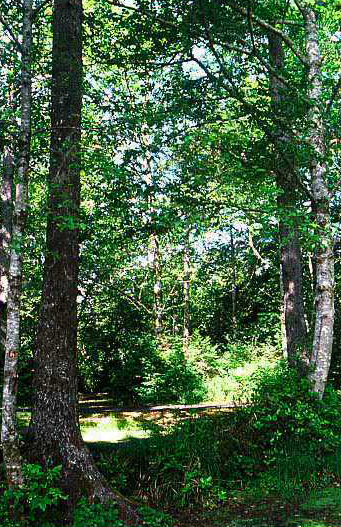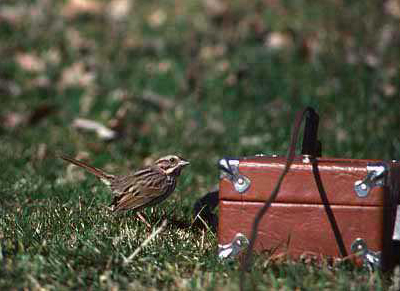| Many
vertebrate taxa have great flexibility in the timing and organization
of their life history cycles whereas other species appear to
be inflexible. Although phenotypic plasticity has received much
attention from ecologists and evolutionary biologists, how this
flexibility, or lack of it, is reflected in neuroendocrine and
endocrine control mechanisms is much less well understood. We
propose here to focus on one life history stage, breeding, in
a group of closely related birds. Populations of "crowned
sparrows" of the genus Zonotrichia breed from above the
Arctic Circle in Alaska, throughout western North America (Z.
leucophrys), and through central and South America to the
southern tip of the continent (Z. capensis). We have identified
key populations in Arctic, mid-latitudes and equatorial regions
that express the full spectrum of extreme inflexibility of timing
(Arctic) to almost complete flexibility and asynchrony (equatorial
regions). Intermediate degrees of flexibility are found at mid-latitudes. |
 Twin Harbors in June
Twin Harbors in June
|
 Twin Harbors in January
Twin Harbors in January
|
| We also have a
large corpus of data from a population of Melospiza melodia
in western Washington State that expresses a similar cline of
reproductive flexibility showing most plasticity in mild, coastal
habitats and least flexibility in high altitude habitats in the
Cascade Mountains. The most valuable aspect of the latter populations
is that they are all the same sub-species, are non-migratory,
are at the same latitude and are thus exposed to the same changes
in day length over the year. This combination of variation in
reproductive plasticity over a latitudinal gradient (Zonotrichia),
and longitudinal (altitudinal) gradient in Melospiza,
represents an extremely powerful array of comparisons to determine
neuroendocrine mechanisms by which vertebrates integrate environmental
signals and orchestrate reproductive function. Given the enormous
database we have for the northern populations of these taxa,
addition of comparative data from southern North America and
equatorial regions will provide critical new insight into how reproductive
function is controlled. We will focus on how three classes of
environmental signals interact to regulate reproductive development
in populations of birds in these diverse habitats. The first
class is called initial predictive information that provides
long term predictive information to trigger reproductive development.
A second class is supplementary information that provides short
term predictive cues to adjust gonadal maturation and onset of
egg-laying to local year-to-year fluctuations in weather etc.
The third type is synchronizing and integrating information that
includes all social interactions
known to influence the first two classes. |
 Goldcreek in January
Goldcreek in January
|
 Goldcreek in May
Goldcreek in May
|
| Therefore
responses to physical cues from the environment must be integrated
with social status and other behavioral stimuli. Field studies
in the California and tropical habitats will provide further
critical long term baseline information on how gonadal development
and onset of egg-laying varies with year to year differences
in weather, arthropod emergence etc. This will add to our already
substantial database on populations in the mountains and higher
latitudes of North America. All field investigations will be
accompanied by field experiments to determine how flexible breeding
seasons are within each habitat. Plasticity in timing onset of
breeding will be tested by implants of sex steroids into adult
males and females to artificially prolong the breeding season
in one sex, and then determine if the untreated mate can also
prolong breeding. Simulated territorial intrusions will characterize
the territorial system of taxa with varying degrees of plasticity
in breeding as well as indicate whether the neuroendocrine/endocrine
systems can respond to social stimulation. Parallel laboratory
experiments will explore further how environmental signals such as change in day
length and temperature interact with social cues to regulate
neuroendocrine and endocrine secretions that orchestrate reproductive
development. |
| These experiments will also identify sensory modalities
by which environmental signals enter the CNS (where not already
known). Finally, cell and molecular techniques will be applied
to determine the mechanisms and, ultimately, the neural pathways
by which environmental signals are transduced into neurosecretions.
These data represent a highly integrated blend of field investigations
coupled with mathematical treatment of natural history data that
will then interface directly with physiological, cell and molecular
mechanisms. The results will not only provide critical new information
on how organisms interpret environmental information in general,
but also have potential practical application as to how animals,
particularly vertebrates, may respond to global change in the
near future and increasing human disturbance at present. |
 Song Sparrow threatening a speaker.
Song Sparrow threatening a speaker.
|





